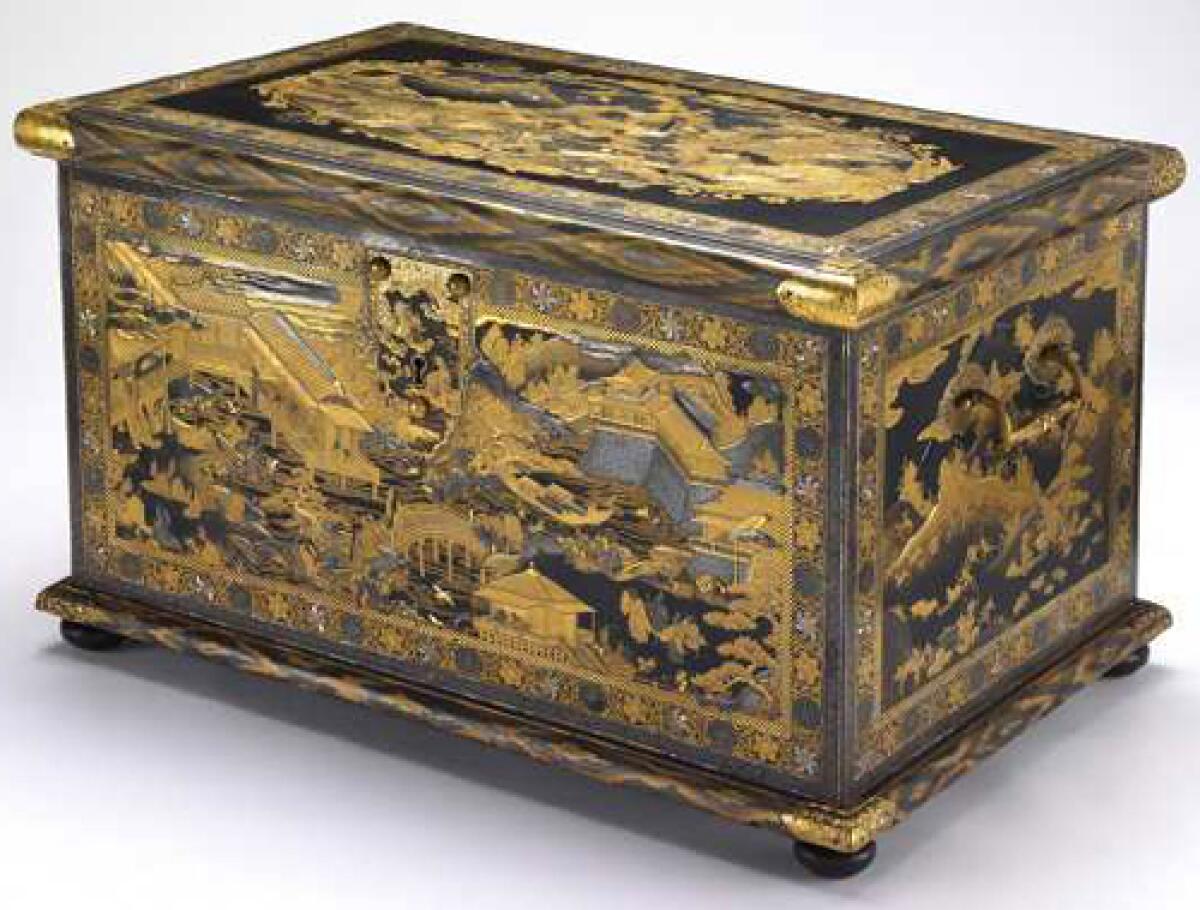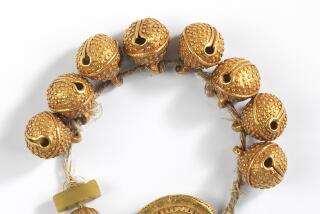Prized Mazarin Chest on view at the Getty

A wonder of 17th century Japanese craftsmanship, the black and gold lacquer trunk known as the Mazarin Chest is an export product. That’s not exactly a compliment in the world of high art. In this case, a European-style chest made in Japan for a foreign market is adorned with scenes from Japanese literature, but a tradition of decorative restraint is subsumed by a European appetite for ornamental excess. Nearly every available space is filled with intricate patterns and narrative imagery.
“Nonetheless, it’s probably our most important Japanese object,” says Julia Hutt, a curator at the Victoria and Albert Museum in London, which has lent the chest and other objects to “Tales in Sprinkled Gold: Japanese Lacquer for European Collectors,” an unusual exhibition at the J. Paul Getty Museum. “Artistically it is really on a par with objects made for the domestic market by the best workshops in Japan. The detail is just amazing.”
The 23 1/4 -by-39 15/16 -by-25 3/16 -inch chest, created around 1640, is decorated in the traditional technique of makie, or “sprinkled picture.” It’s a painstaking process of sifting gold or silver powder and flakes into successive coats of lacquer before they dry. A toxic lacquer called urushi is extracted from trees, refined, mixed with other resins and fine clay, and applied to well-seasoned wood with fabric adhered to its surface. The base coat of lacquer consists of 20 to 25 thin layers, each dried for about 24 hours, then rubbed and polished.
The densely detailed pictures on the chest -- mostly scenes from two classic sagas, “The Tale of Genji” and “The Tale of the Soga Brothers” -- are built up with additional layers of lacquer. Tiny birds and flowers are fashioned of metal and attached to the lacquer. Floral borders are inlaid with mother-of-pearl. A feathery wood-grain pattern around the top and bottom is made with gold and silver leaf.
The Mazarin-La Meillerayes chest, named for a powerful French family whose crest appears on the key, made its way to England and Scotland before the V&A bought it at auction in 1882.
“It had been well cared for,” Hutt says, “but the problem was -- even when I started at the museum, over 30 years ago -- we didn’t know about handling lacquer with gloves. There would have been lots of fingerprints, and we certainly wouldn’t have known about light damage.” Over the years, changes of temperature and humidity also took a toll, causing the wood to shrink and portions of the lacquer to crack and lift. By 2004, the chest had become too fragile to exhibit or travel.
A grant from the Getty Foundation came to the rescue, but not by shipping the chest to Japan for treatment, as might be expected. The exhibition, curated by Jeffrey Weaver, a Getty curator, and Antoine Wilmering, a conservator and program officer at the foundation, marks the completion of a research and conservation project that sent a Japanese urushi lacquer specialist to London to work with V&A staff. After months of testing materials and processes, they stabilized cracks in the chest and reattached loose pieces.
For Deborah Marrow, the foundation’s director, the exhibition celebrates the new life of “a truly magical object” and a productive international collaboration of scientists, art historians and conservators. The show, which closes May 24, will become part of a larger exhibition, “Export Lacquer: Reflection of the West in Black and Gold Makie,” this fall and winter in Kyoto and Tokyo, Japan.
More to Read
The biggest entertainment stories
Get our big stories about Hollywood, film, television, music, arts, culture and more right in your inbox as soon as they publish.
You may occasionally receive promotional content from the Los Angeles Times.






